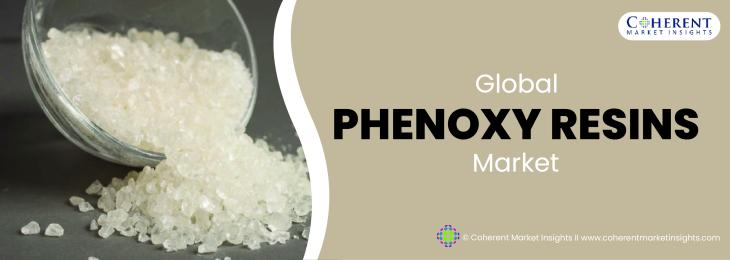
Phenoxy resins are both thermosetting and thermoplastic amorphous polymers. Because they have hydroxyl groups at both the ends and in each repeat unit, these polymers called polyhydroxyethers. Bisphenol A and epichlorohydrin are the ingredients. Phenoxy resins provide outstanding mechanical properties such as hardness, strong flexibility, abrasion resistance, impact resistance, chemical resistance, heat resistance, vapor barrier, and compatibility. A polyhydroxyether with alpha-glycol groups at the ends is phenoxy resin. The biggest polymeric species have weight-average molecular weights greater than 250,000 daltons, with the range between 25,000 and 60,000. Phenoxy resins in watery colloidal dispersions. Phenoxy resins favor polar, aprotic-type solvents in solvent-borne applications, but integration into formulations with hydrocarbon or aromatic solvents is possible if enough polar solvents are used. They can be found in liquid and solid form, alone or combined with other polymers. Applications for common solid grade phenoxy resins include coating wire, PCB coatings, can and coil coating, metal primers, coating wood, and coating glass.
The growing demand for Phenoxy Resin from end-use industries is a key reason fueling expansion in the global market for phenoxy resins due to phenoxy resin's compatibility with several polymers. Additionally, the cross-linked phenolic and epoxy formulations utilized in composites, coatings, and adhesives can be effectively flexibleized by these resins. Due to end-use industries like electronics and automobiles, the composite sector is expanding.
Major Players in the Phenoxy Resins Industry:
1. Mitsubishi Chemical
Mitsubishi Chemical is a Japanese company formed from the merger of Mitsubishi Chemical Corporation and Mitsubishi Pharma Corporation. The company is one of the core Mitsubishi companies. It was founded in 2005 and headquartered in Tokyo, Japan. It operates in 90 countries. Mitsubishi Chemical Corporation stated in January 2022 that it will construct a new facility at its Fukuoka Plant to produce speciality epoxy resins for semiconductor encapsulants and electronic components in order to increase production capacity of special epoxy resins.
2. Gabriel Performance Products, LLC
Gabriel Performance Products, LLC is a specialty chemicals company, founded in 2001 and headquartered in Ohio, United States. It operates in approximately 30 countries. In January 2021, Huntsman Corporation declared that it has successfully acquired Gabriel Performance Products (Gabriel) from Audax Private Equity. A maker of specialty additives and epoxy curing agents in North America, Gabriel serves the coatings, adhesives, sealants, and composite end-markets.
3. DIC Corporation
DIC Corporation is Japanese chemical company, founded in 1908 and headquartered in Tokyo, Japan. It operates in 12 countries. In July 2022, DIC Corporation announced that its wholly owned subsidiary DIC (China) Co., Ltd. would buy the Chinese coating resins manufacturer Guangdong TOD New Materials Co., Ltd. (also known as Guandong Frontier New Materials Co., Ltd.), with its headquarters in Guangdong Province, China (hereafter, TODNM). The acquisition price was undisclosed.
4. Kukdo Chemical
Kukdo Chemical was founded in 1972 and headquartered in Seoul, South Korea. It operates in. Kukdo Chemical recently received ISO 37301 (Compliance Management System) accreditation, which will go into effect in June 2023. Kukdo Chemical is quickly eclipsing its position as the world's top manufacturer of epoxy.
5. Georgia-Pacific (GP) Chemicals
Georgia-Pacific (GP) Chemicals was founded in1847 and headquartered in Georgia, United States. It has more than 150 Georgia-Pacific locations around the world.
6. SHIN-A T&C Co., Ltd.
SHIN-A T&C Co., Ltd. was founded in 2006 and headquartered in Seoul, South Korea. It operates in 14 countries worldwide.
7. Nan Ya Epoxy
Nan Ya Epoxy was founded in 1988 and headquartered in Taiwan. It operates in China, Taiwan and the USA.
Definition: Phenoxy resins are medium to high molecular weight polymers of epichlorohydrin and Bisphenol-A. These thermoplastic polymers contain both terminal and recurring hydroxyl groups along the backbone.










